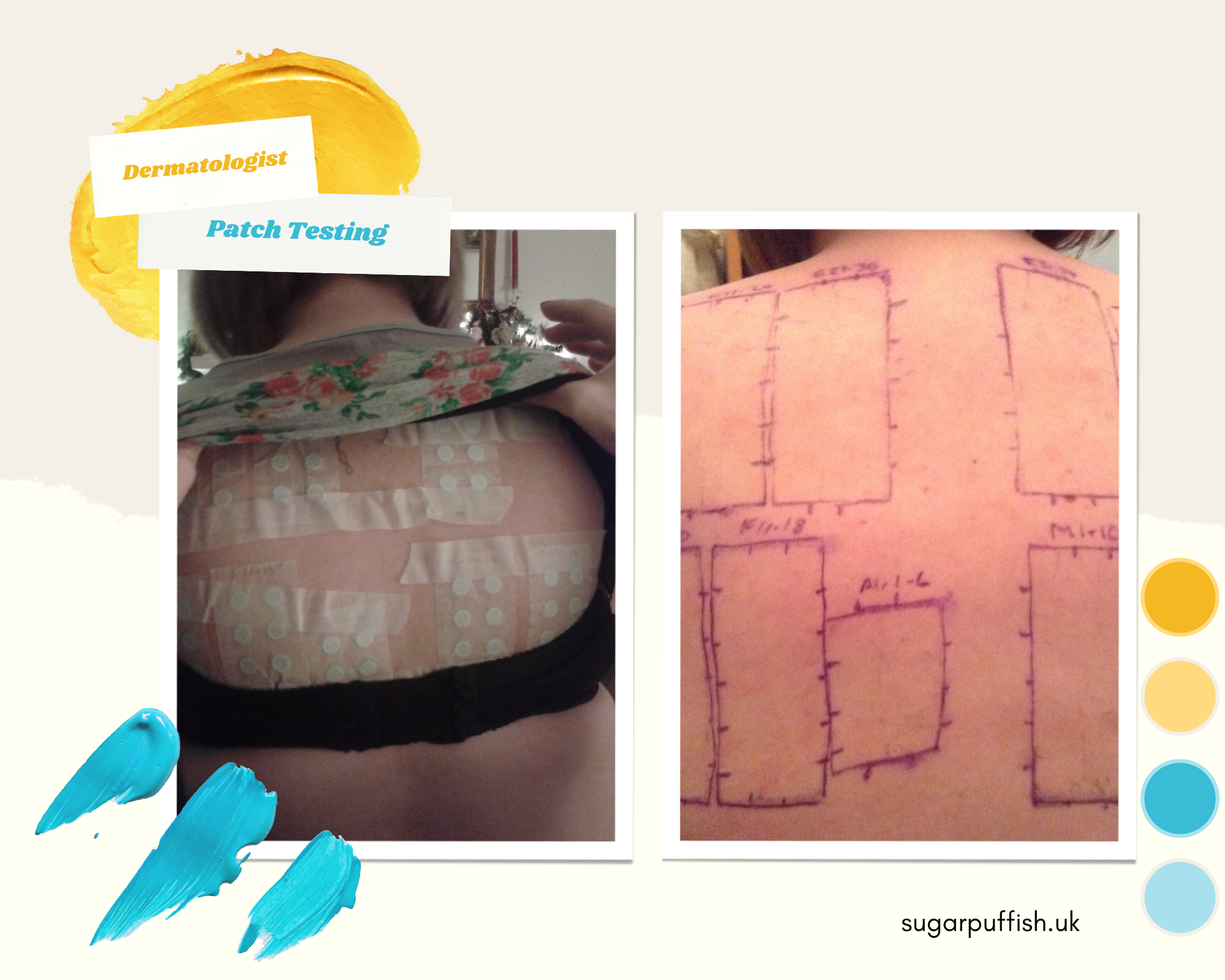My Story - Appointment with a Dietitian and Dermatologist
Disclaimer - The information provided is for guidance and is not a substitute for medical advice. My sources www.bad.org.uk & www.eczema.org
December was a busy month for Hospital appointments. The Allergy Consultant I saw in August had referred me to a Dietitian and Dermatologist. I don’t have much to say about my dietitian appointment. I was assured that I have been managing my free from diet well and I clearly know my way around the Free From aisle. The only advice was to up my calcium intake and challenge my OAS (also known as Pollen Food Syndrome).
As I have never seen a Dermatologist for my eczema the consultant thought it was worth a referral for further skin tests. Dermatologists are able to test substances like metals, perfumes, plants and household chemicals. Testing involves three appointments in the same week as reactions can take a longer time to develop. As the photograph shows during my first appointment, substances were applied to my back in special small containers held within a tape. On the second visit the patches were removed, the tests were marked out and any reactions noted. On the third visit, the Dermatologist takes a final reading and discusses any results.
The outcome of my patch testing was a mild reaction to Hydroperoxides of Linalool and MIT (Methylisothiazolinone), however, I was warned about false positive due to my eczema. MIT is a preservative I have always avoided but perhaps my love of lavender will have to end given the linalool result. For as long as I can remember my eczema has always been referred to as Atopic. The dermatologist confirmed this but also believes I have Seborrhoeic Dermatitis and Urticaria.
Seborrhoeic (pronounced seb-or-A-ik) simply means a rash appears in areas of the skin with large numbers of grease (sebaceous) glands, such as the scalp, face and centre of chest. According to the literature provided to me, Seborrhoeic is not fully understood, but yeast called Malassezia that lives on skin plays a part in causing it (FYI this is not the same yeast present in foods or that causes thrush).
Urticaria is also known as hives or nettle rash. It is caused by the release of histamines from cells in the skin called mast cells and can be triggered in many ways. From my research, it looks like this may explain my reactions to penicillin, some foods and grass.
Where do I go from here? It certainly has been an interesting set of appointments. I have confirmed in my own mind that I was not wrong about my extremely sensitive skin and my decision to avoid certain ingredients is worth continuing. I have been informed taking anti-histamines on a regular basis (normally I only take during hayfever season) may help with the Urticaria. The Seborrhoeic dermatitis is the tough one as it appears treatments manage the condition but do not cure it. At this stage I have declined prescription creams and steroids. Antifungal treatments are the recommendation but I will be seeking a natural alternative. Some people may think I am bonkers to turn down treatment but I quit prescription eczema medications 16 years ago after noticing damage to my skin so I am extremely reluctant to use them again. I return to my Allergy Consultant in February and I will be blogging my progress following the Dermatologist's diagnosis.
Sarah x
Sarah x
